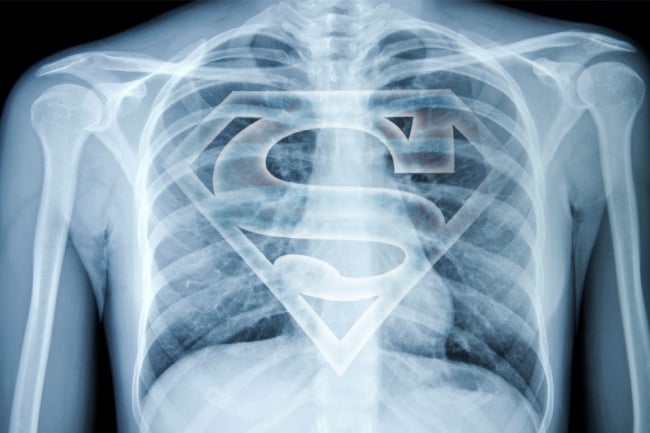You have /5 articles left.
Sign up for a free account or log in.

Lectures in the course SuperAnatomy at Ohio State explained how organs and organ systems differ in various superheroes.
Photo illustration by Justin Morrison/Inside Higher Ed | Getty Images
A new way of teaching human anatomy stretched students’ minds more than Elastigirl.
Anatomy professors at Ohio State University ran a study on two different anatomy courses, one referencing superheroes to teach curricular content and the other delivered in a standard format to see how pop culture references could boost engagement.
After three semesters of comparison, they found heroes could increase learner motivation, promote deeper understanding of material and make content approachable and enjoyable.
Suiting student needs: Previous research has found students will fail or withdraw from an anatomy course if they find the material to be dull or labor-intensive, according to the article. To help students manage the complexities of a course or create greater interest in the material, professors can deliver the content in creative and compelling ways.
Informal learning experiences and metaphors can also help students connect to the material and boost their intrinsic motivation to learn, making content less intimidating. The study explored using metaphors at a higher level, incorporating superheroes as examples in teaching human anatomy to undergraduate students.
A class of heroes: The superhero course, SuperAnatomy, was a single-section, three-credit-hour course for students of all majors. The class met three times a week for an in-person lecture or synchronous Zoom session.
Each session began with a lecture on human anatomy and how organs and organ systems differed in various superheroes. The professor would then introduce a superhero, their background, their powers and how their anatomical concepts related to clinical correlates and modern science. Deadpool, for example, was an example of tissue repair and Elastigirl a model for hyperflexibility.
The course had five units, and after each unit students completed a quiz and at semester’s end a final exam. Students also wrote a final paper in which they analyzed a superhero or superpower and connected how a typical human would be modified to accommodate the powers and the possible consequences from the accommodation.
Students opting in to the study took a demographic survey, precourse survey and postcourse survey. The pre- and postsurveys analyzed students’ interest or understanding of superheroes and how the pop culture references maintained their interest or boosted their understanding of content, respectively.
Students in SuperAnatomy improved their pretest score an average of 11 points after completing the course. In surveys, 94 percent of students said superheroes and pop culture helped them gain a deeper understanding of content, and 95 percent said the use of superheroes and pop culture increased their motivation to learn the material.
The nonsuper course saw better quiz scores, which researchers attributed to more class time related to content, additional lab time and more quiz opportunities after every lecture as opposed to once per unit.
DIY: The researchers offer some key insights to other professors looking to incorporate popular culture references or superheroes into course curricula:
- Consider mental health benefits. STEM courses are known to be difficult for students, particularly those who were not adequately prepared in prerequisite or high school courses. By boosting student interest and motivation, pop culture references can also reduce negative mental health effects of difficult coursework.
- Teach references thoroughly. Though superheroes may be household names, not all elements of their powers or background may be as familiar to students. When making references, professors should introduce characters thoroughly, understanding that some learners (like international students) may be unfamiliar with them.
- Let students decide. Personal interest in the subject matter is vital to student motivation, so swapping difficult material for an uninteresting pop culture reference may not provide the desired results. For a professor who does not want to restructure a course completely around an idea from pop culture, they can let students integrate their own topic for a special project, paper or relevant discussion.
If your student success program has a unique feature or twist, we’d like to know about it. Click here to submit.




